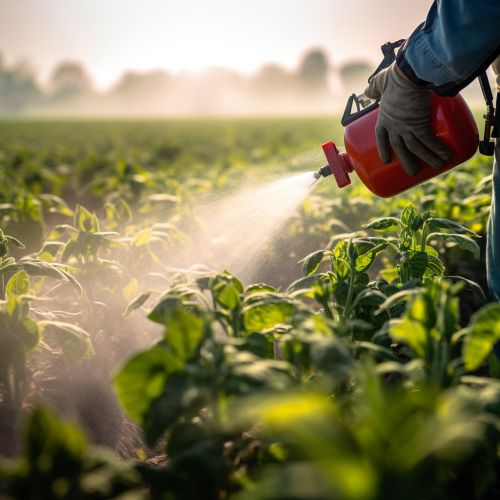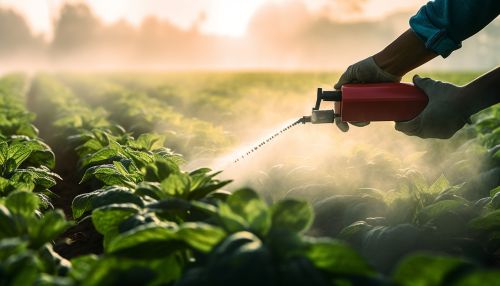Pesticide
Overview
Pesticides are substances used to prevent, destroy, repel or mitigate any pest. They are a category of chemical compounds that include insecticides, herbicides, fungicides, and rodenticides. Pesticides have a broad range of applications, from agriculture and horticulture to public health and residential pest control. Despite their widespread use, they are a topic of controversy due to their potential impact on the environment and human health.


History
The use of pesticides dates back to ancient times when sulfur was used by the Sumerians around 4,500 years ago. In the 15th century, arsenic, mercury, and lead were used to control pests. The industrial revolution in the 19th century led to the development of more sophisticated pesticides. The 20th century saw the introduction of synthetic pesticides, such as DDT, which revolutionized pest control but also led to significant environmental and health concerns.
Types of Pesticides
Pesticides can be classified based on their target organisms, chemical composition, and mode of action. The main types include:
Insecticides
Insecticides are designed to control insects. They can be further classified into contact, stomach, and systemic insecticides.
Herbicides
Herbicides are used to control unwanted vegetation, particularly weeds. They can be selective (targeting specific plants) or non-selective (killing all plants they come into contact with).
Fungicides
Fungicides are used to control fungal diseases by inhibiting or killing the fungus causing the disease.
Rodenticides
Rodenticides are chemicals designed to kill rodents, primarily mice and rats.
Mode of Action
The mode of action refers to how the pesticide works at the biochemical or cellular level. Pesticides can act by contact, ingestion, or inhalation. They can affect various biological processes, such as nerve function, cell growth, or respiration.
Application Methods
Pesticides can be applied in various ways, depending on their formulation and the target pests. Common methods include spraying, fumigation, injection into soil or plants, and bait stations.
Efficacy and Resistance
The efficacy of a pesticide refers to its ability to control the target pest. Over time, pests can develop resistance to pesticides, reducing their efficacy. This is a major concern in pest management and can lead to increased pesticide use.
Environmental Impact
Pesticides can have significant impacts on the environment. They can contaminate soil, water, and air, and can affect non-target organisms, including beneficial insects, birds, and mammals. Some pesticides are persistent in the environment and can bioaccumulate in the food chain, leading to potential impacts on ecosystem health and biodiversity.
Health Effects
Exposure to pesticides can have acute and chronic health effects. Acute effects can include irritation, nausea, headaches, dizziness, and in severe cases, seizures, coma, or death. Chronic exposure can lead to cancer, neurological disorders, hormonal disruption, and reproductive health problems.
Regulation
Pesticides are regulated by various national and international agencies to ensure their safe use. Regulations cover the approval, registration, sale, transportation, use, and disposal of pesticides. The EPA in the United States and the ECHA in the European Union are examples of regulatory bodies.
Future Trends
The future of pesticides is likely to be influenced by advances in technology, changes in regulatory frameworks, and increasing public awareness of environmental and health issues. Integrated Pest Management (IPM), biopesticides, and precision agriculture are some of the trends shaping the future of pesticides.
